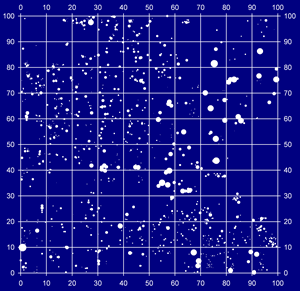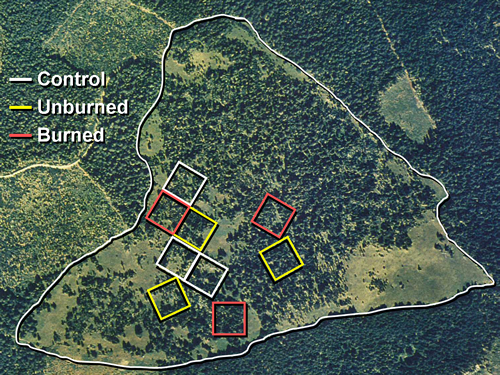The
experiment includes three replicates of each of three treatments
randomly assigned to experimental plots (aerial photo, right). Treatments
include:
- Control—no trees removed
- Unburned—all trees removed and logging
residues piled and burned, leaving most of the ground surface
unburned
- Burned—all trees removed and logging
residues broadcast burned
Different
components of this design allow us to test the sufficiency of tree
removal and the potential benefits of fire (Question
1), and any adverse effects of broadcast or pile-burning
(Question 2).
| Pre-treatment
forest mosaic |
 |
| Typical
within-plot variation in tree age (symbol size) and density
in an experimental plot prior to tree removal. Subplots
(small squares) are 10 x 10 m. |
|
|
| Arrangement
of experimental plots |
 |
|
Plots
are each 1-ha (100 x 100 m) |
|
|
Each
experimental plot also supported a patchy mosaic of meadow openings
and forests of varying age and structure (figure, left), reflecting
recent (20th-century) and past invasions (extending to
the early 1800s). This
fine-scale variation—sampled with 10 x 10 m subplots—allows us
to assess whether duration of tree influence (over decades to centuries)
affects the potential for restoration (Question
3). |
![]()
![]()
![]()
![]()
_13%20Ju%202009_sm.jpg)


